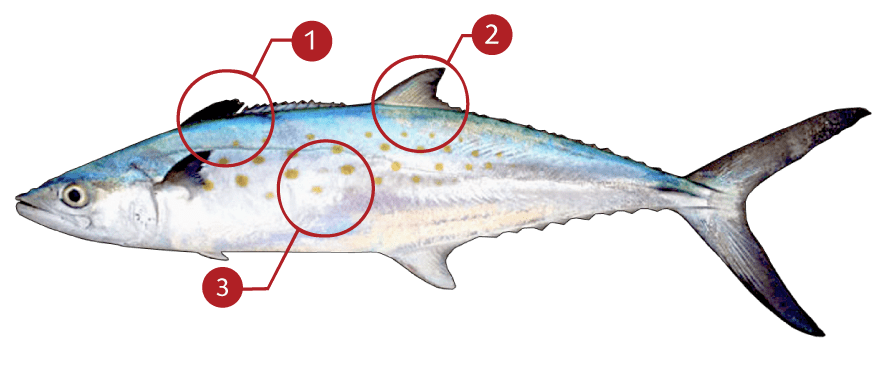SPANISH MACKEREL
How to identify a Spanish Mackerel
The Spanish mackerel can be distinguished from both the cero mackerel, Scomberomorus regalis, and the king mackerel, S. cavalla, by the presence of bronze or yellow spots but no stripes, on the sides and by lack of scales on the pectoral fins. The cero, the Spanish mackerels closest look-alike in the Atlantic, has both spots and stripes of bronze and yellow on the sides, and the king mackerel has neither spots nor stripes. Both the cero and the king mackerel have scales on the pectoral fins.The anterior portion of the first dorsal fin in the Spanish mackerel is black (not true of the king mackerel), and the second dorsal fin and pectoral fins may be black tipped. The body is essentially silvery and typically mackerel-like. The back is bluish.
Where to catch Spanish Mackerel
Occurs in the western Atlantic north to the Chesapeake Bay and occasionally to Cape Cod, Massachusetts, and south to Yucatan, Mexico.
IDENTIFICATION

| |
The anterior portion of the first dorsal fin in the Spanish mackerel is black |
| |
The second dorsal fin and pectoral fins may be black tipped |
| |
Bronze or yellow spots but no stripes, on the sides |
TARGET AREAS
|
|
Acknowledgements: We thank TAKEMEFISHING.org (www.takemefishing.org), Wisconsin Department of Natural Resources, Indiana Department of Natural Resources for their contributions to these FISH FACTS.

